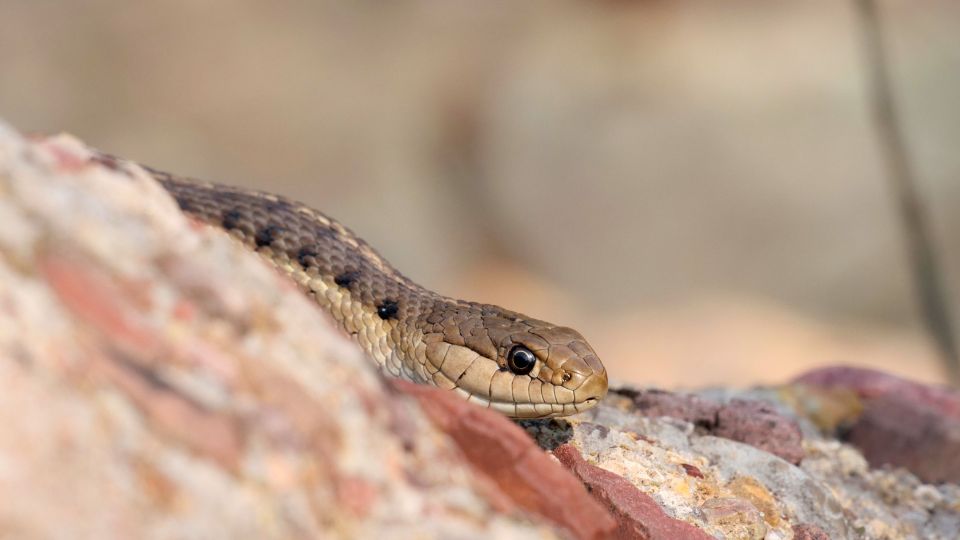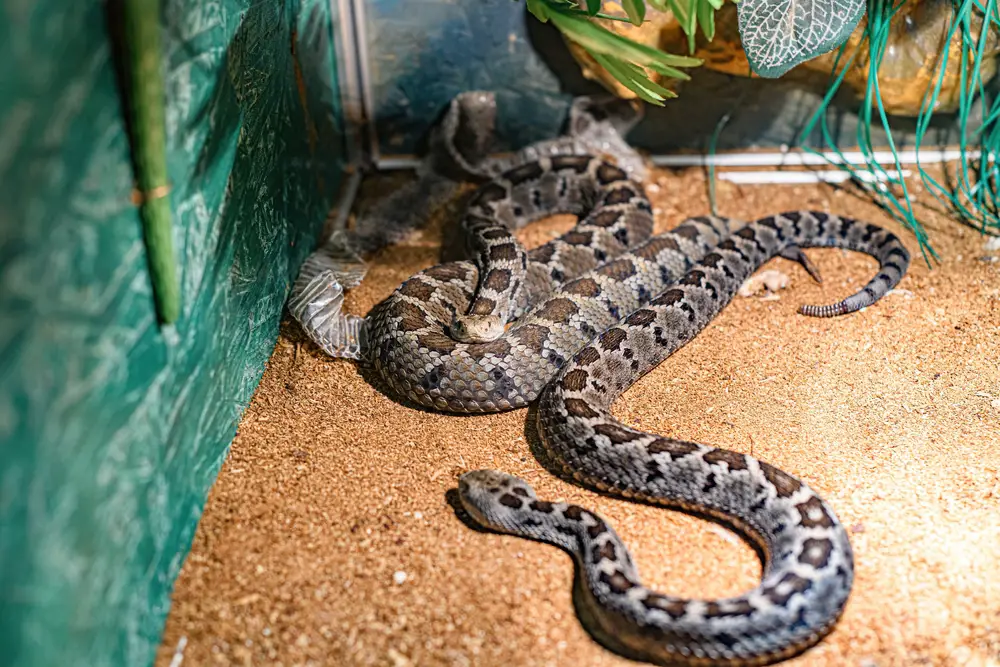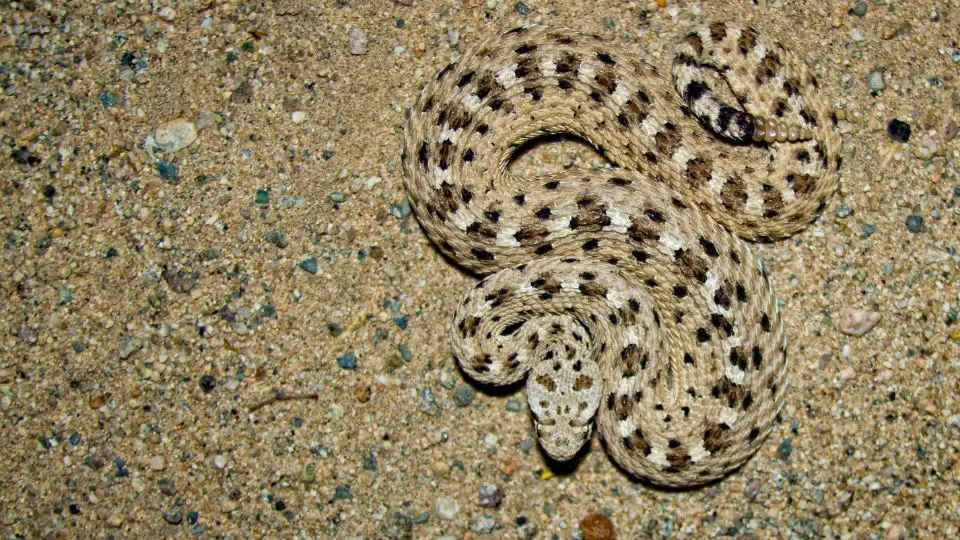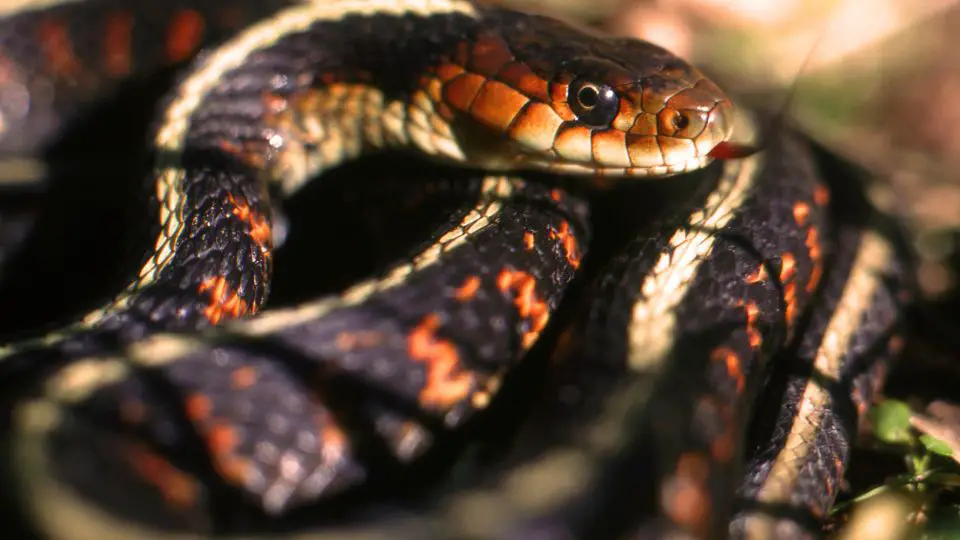Snakes have peculiar eating habits meaning their digestion process is relatively different. Snake droppings vary based on the kind of snake.
The color, size, and content of snake poop often depend on the type of snake. For instance, giant venomous snakes like copperhead snakes excrete sizeable, brown fecal matter.
The excrement of snakes is slightly different from other animals. They don’t have an anus, so they can’t defecate in the traditional sense. Instead, they discharge through their cloaca, an opening at the base of their tails.
Table of Contents
How Do Snakes Poop?
When a snake is ready to excrete, it will push its waste out through the cloaca and off its body. Snakes often seem to rub their bodies against rocks or branches after excreting as they need to remove the sticky film that covers their cloaca.
The scat has uric acid, which helps to break down the snake’s waste before it exits the body. While most animals have separate openings for urination and defecation, snakes only have one opening.
They use the cloaca for both, meaning that when a snake urinates, its waste comes out as a liquid. Their solid waste is usually in the form of a pellet.
A white powdery substance called urates, which help to absorb moisture and keep the snake’s waste from drying out, covers the pellets. When snakes regurgitate their food, it looks similar to how they excrete because the process is quite similar.
When a snake is ready to regurgitate, it will push its food back up through its throat and out of its mouth. The distinction is that the snake is vomiting up undigested food instead of waste.

What Does Snake Poop Look Like?
When snakes excrete waste, it’s a mixture of white urine and feces that’s more liquid than solid. Snake feces are much like bird droppings. They’re often found in a U-shape or coil and can be mistaken for worms.
The coil or u-shape shape results from snakes’ long and winding intestines. In terms of color, snake poop is usually black or brown, with semi-formed logs characterized by a chalky white part. Other colors can indicate something is amiss, especially with pet snakes.
For example, green urates can point to an internal infection. Red snake poop can indicate blood in the lower digestive tract, meaning you must consult your veterinarian immediately.
Snake droppings usually have a strong odor because snakes eat whole prey, and the feces contain undigested food. If you see snake droppings in your home, it’s a good indicator of a snake nearby.
How do snakes’ diet affect their poop?
Snake scat might contain scales, hair, bones, and other indigestible materials. The size and amount of snake droppings can help determine the type and number of snakes infesting your home.
The length of snake poop is generally longer than the width because most snakes have a long and slender body shape. Different kinds of snakes excrete differently.
For example, rattlesnake feces are often filled with their prey’s hair, bones, and teeth, while garter snake feces look like tiny pellets. Viper snakes usually have feces containing a lot of undigested food, while copperhead snakes typically have tubular feces containing few solid pieces.
Snakes generally defecate once every 5 to 10 days. However, this timeline can differ based on the type of snake and what they’ve been eating. For example, if a snake has just eaten a large meal, it may not defecate for several weeks.
Where Do Snakes Usually Poop?
Typically, snakes defecate in areas away from where they live. Often, they will choose a spot near their hiding place or where they bask in the sun. If you have a pet snake, you can expect it to poop in its cage.
However, snakes usually try to find a corner or an area to relieve themselves so their cage stays clean. Always put your snake in a clean cage and change the bedding regularly.
If you see a snake in the wild, it’s likely pooping away from where it sleeps or eats to keep its environment clean and free of disease. Snakes may also poop to defend themselves when they are scared or feel threatened.

How Do You Clean Up Snake Poop?
Spot cleaning urates—snake urine containing liquid and solid white clumps—is difficult since the poop seeps into the surrounding substrate.
The best way to remove the waste is to sift through the substrate with a small filter. After that, dispose of the waste in the toilet. After spot cleaning, empty and clean the enclosure, and all décor. Wash everything thoroughly with hot soapy water, including your hands.
If you keep more than one snake, it’s crucial to thoroughly clean each enclosure before putting a new snake in it to prevent spreading disease. It’s advisable to avoid using any chemicals in your snakes’ enclosure as they can be harmful to your snake if you don’t rinse it off properly.
If you have a snake defecation problem that you can’t seem to fix, it might be time to see a reptile veterinarian. Your snake could have an underlying health condition causing it to produce more waste than usual.
If you have snake poop outside, the best way to clean up snake poop is:
- use a small shovel or trowel to scoop it up
- place it in a sealed bag
- dispose of it correctly
Lizard Poop Vs. Snake Poop
Although lizards and snakes are both reptiles, their poop is different. Primarily, snake droppings are ropier and looser compared to lizard droppings.
Additionally, they might feature undulations or undefined shapes. Lizard poop is generally well-formed and tubular. It also has a dry appearance.
Regarding size, snake poop is usually bigger because snakes are generally longer than lizards. Of course, certain exceptions to this rule exist, but in general, snake droppings will be larger.
Another way to tell the difference between lizard and snake poop is by looking at the contents. Lizard droppings generally contain undigested food items, such as insects or plant matter.
On the other hand, snake droppings will not typically have these things. Instead, they will consist primarily of waste products and urates, a type of solid waste excreted by snakes.

What To Do If You Identify Snake Poop in Or Around Your House?
If you have found snake poop in or around your house, the best thing to do is to clean it up immediately. Snake poop can contain harmful bacteria that can cause serious illness in humans and pets.
If you cannot identify the type of snake that left the poop, it is best to assume it is poisonous and take appropriate precautions. If you know the kind of snake, you can determine if it is venomous or not.
The prudent way to handle venomous snakes is to contact a professional. Do not try to capture the snake yourself. If the snake is non-venomous, safely remove the feces with a shovel or tool.
Be sure to wear gloves and dispose of the feces in a plastic bag. Clean your hands properly with adequate water and soap after handling the feces.
If you think you see snake droppings, it’s advisable to contact a professional snake removal service. They can help identify the type of snake, remove it from your home, and help you prevent future invasions.

